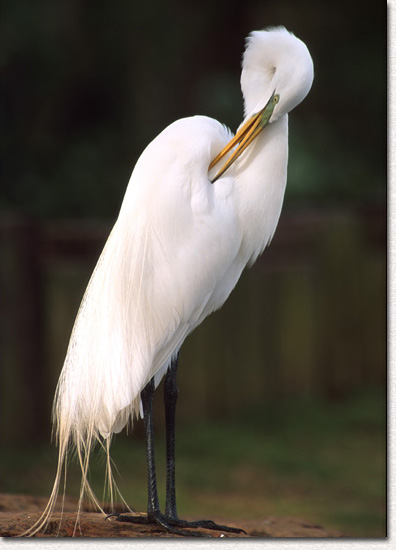Description:
35-41" A large, all-white heron with yellow bill
and black legs, In breeding plumage, has long lacy plumes on
back, green above bill, similar but smaller than
Florida's "Great White Heron"
|
Habitat:
common worldwide in freshwater and saltwater marshes, ponds, lagoons, streams, lakes, mangrove swamps, mud flats. Prefers open habitats for feeding. Stalks prey slowly, methodically in shallow water.
Spends the night roosting in trees or shrubs in large communal flocks. |
| Nesting:
3-5 pale blue-green eggs on a platform of sticks in a
tree or bush, nests in colonies often among other heron
species |
Range:
breeds from Oregon south to Gulf of Mexico, from Minnesota
to Mississippi valley, and southeast, winters along west
coast, Atlantic coast to New Jersey, and in tropics |
| Voice: A
guttural croak, often just before flying, also loud squawks
at nesting colonies |
Diet:
insects, lower vertebrates, small birds. Young usually fed frogs, crayfish, fish; regurgitant delivered directly into nestlings' mouths, later into nest. |

